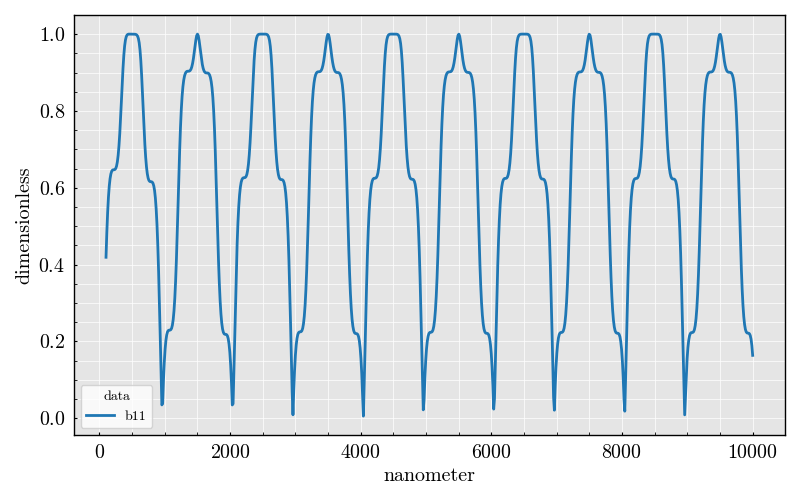Note
Go to the end to download the full example code.
Cylinder: B1 Scattering Coefficient#
This example demonstrates how to compute and visualize the B1 scattering coefficient as a function of diameter for cylindrical scatterers using PyMieSim.
Importing the package dependencies: numpy, PyMieSim
import numpy as np
from TypedUnit import ureg
from PyMieSim.experiment.scatterer import Cylinder
from PyMieSim.experiment.source import Gaussian
from PyMieSim.experiment import Setup
Defining the source
source = Gaussian(
wavelength=400 * ureg.nanometer, # 400 nm
polarization=0 * ureg.degree, # Linear polarization angle in radians
optical_power=1e-3 * ureg.watt, # 1 milliureg.watt
NA=0.2 * ureg.AU, # Numerical Aperture
)
Defining the scatterer distribution
scatterer = Cylinder(
diameter=np.linspace(100, 10000, 800)
* ureg.nanometer, # Diameters ranging from 100 nm to 10000 nm
property=1.4 * ureg.RIU, # Refractive index of the cylinder
medium_property=1 * ureg.RIU, # Refractive index of the surrounding medium
source=source,
)
Setting up the experiment
experiment = Setup(scatterer=scatterer, source=source)
Measuring the B1 scattering coefficient
dataframe = experiment.get("b11")
Plotting the results Visualizing how the B1 scattering coefficient varies with the cylinder diameter.
dataframe.plot(x="scatterer:diameter")

<Figure size 800x500 with 1 Axes>
Total running time of the script: (0 minutes 0.728 seconds)
